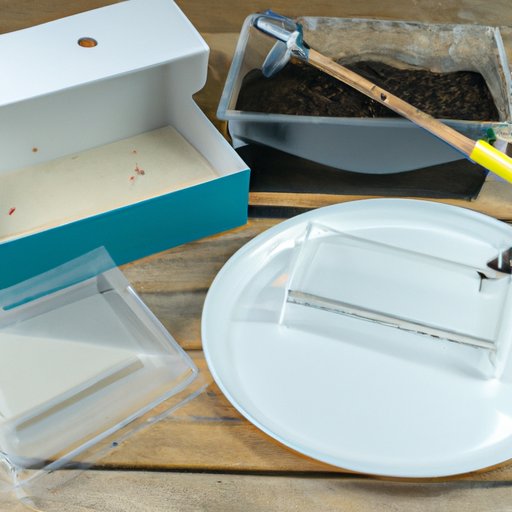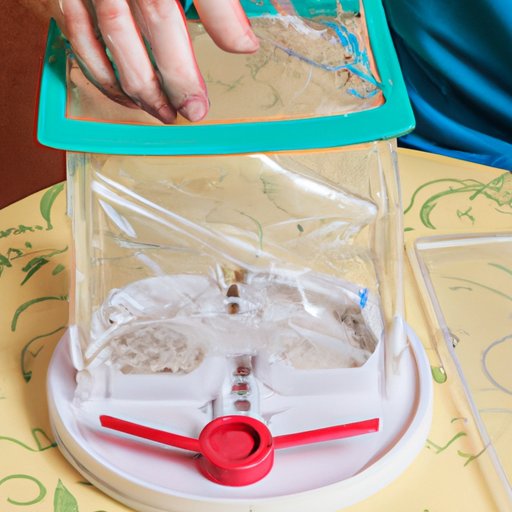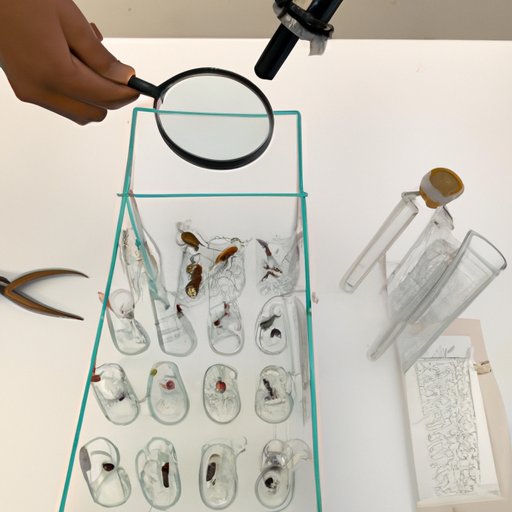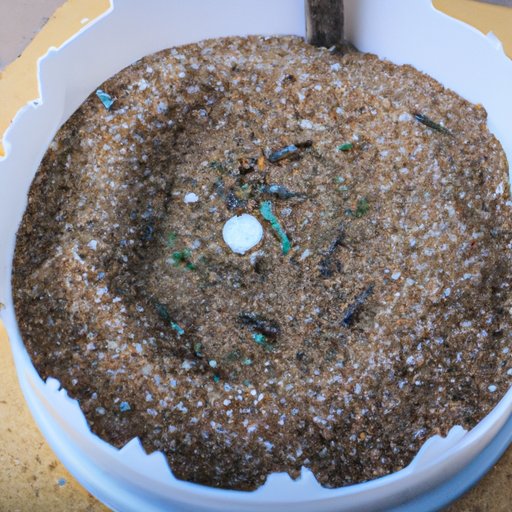Introduction
Ant farming is a unique and fascinating hobby that allows you to observe the behaviors of these small but highly organized insects. It’s also a great way to introduce children to the world of entomology and to teach them about the importance of environmental stewardship. With a few simple steps, you can easily set up an ant farm in your home.
Overview of Ant Farming
Ant farming is a popular hobby that involves keeping ants in an enclosed habitat, usually made of glass or plastic, so that they can be observed. The objective of ant farming is to create an environment where the ants can thrive and learn more about their behavior and society. Ant farming has become increasingly popular over the years and is now accessible to anyone who wants to give it a try.
Benefits of Having an Ant Farm
Having an ant farm offers a number of benefits. Not only does it provide an interesting and educational experience, but it can also help foster a sense of responsibility and respect for the environment. Watching the ants interact with each other and build their own complex societies can be a rewarding experience. Additionally, ant farming can be a great way to teach children about the intricate workings of nature.

Materials Needed for Setting Up an Ant Farm
The first step to setting up an ant farm is to gather the necessary materials. You will need an appropriate habitat, such as a glass or plastic container, as well as soil, sand, and other elements to create the right environment for the ants. Depending on the types of ants you plan to keep, you may also need additional items, such as food, water, nesting material, and ventilation.
Habitat Selection
When selecting a habitat for your ant farm, it’s important to choose one that is large enough to accommodate the type of ant you plan to keep. Plastic containers are generally recommended because they are easier to clean and maintain than glass habitats. It’s also important to make sure the habitat has adequate ventilation and is kept away from direct sunlight. The habitat should also have a secure lid to prevent the ants from escaping.
Where to Purchase Materials
You can purchase the materials needed to set up an ant farm at most pet stores or online. There are also many websites dedicated to ant farming that offer kits with everything you need to get started. If you prefer to make your own habitat, you can find instructions online or in books about ant farming.

Process of Setting Up an Ant Farm
Once you have gathered the necessary materials, it’s time to set up your ant farm. Begin by adding the soil and sand to the habitat. Then, place the food, water, and nesting material in the habitat. Finally, introduce the ants into the habitat and close the lid securely.
Introducing Ants into the Habitat
The next step is to introduce the ants into the habitat. This can be done by purchasing an ant colony from a pet store or online, or by catching wild ants. When introducing the ants, it’s important to handle them carefully and to make sure that the habitat is clean and free of any debris or contaminants. Once the ants are in the habitat, it’s important to monitor them closely and to make sure they have enough food and water.
Making DIY Ant Farms
If you don’t want to purchase a ready-made ant farm, you can also make one yourself. To do this, you will need a plastic or glass container, soil, sand, and other materials. You can also add decorations, such as rocks and twigs, to make the habitat more interesting. Once the habitat is set up, you can introduce the ants into the habitat and begin observing them.
Maintaining an Ant Farm
Once you have set up your ant farm, it’s important to maintain it properly in order to ensure that the ants remain healthy and happy. This includes providing the ants with a steady supply of food, water, and nesting material. It’s also important to research the type of ant you plan to keep in order to understand their needs and provide them with the proper care.
Feeding the Ants
Ants require a steady supply of food to survive. They typically feed on small insects, such as flies, as well as fruits and vegetables. It’s important to make sure that the food is fresh and that it is not contaminated with pesticides or other chemicals. You can also purchase commercially prepared ant food from pet stores or online.

Researching Types of Ants That Can Be Kept
Before setting up an ant farm, it’s important to research the types of ants that can be safely kept in captivity. Some species of ants, such as fire ants, are not suitable for ant farming due to their aggressive nature. Additionally, some species of ants require special care and conditions, so it’s important to understand their needs before attempting to keep them in captivity.
Proper Care for Ants
It’s important to provide the ants with the proper care in order to ensure their health and wellbeing. This includes providing them with a clean habitat, plenty of food and water, and the right temperature and humidity levels. Additionally, it’s important to monitor the ants closely and to take note of any changes in their behavior.
Conclusion
Starting an ant farm is a fun and educational experience that can teach you a lot about insect behavior. By following the steps outlined above, you can easily set up and maintain an ant farm in your home. With the right care and attention, your ants will thrive and you’ll be able to enjoy watching them build their own complex societies.
(Note: Is this article not meeting your expectations? Do you have knowledge or insights to share? Unlock new opportunities and expand your reach by joining our authors team. Click Registration to join us and share your expertise with our readers.)
